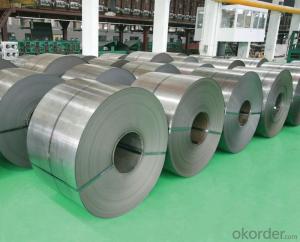Reinforcing bars, commonly known as rebar, are the backbone of modern construction. They are used to strengthen concrete structures, providing the necessary tensile strength that concrete lacks. But did you know that there are different sizes of rebar? Understanding the different options is crucial for any construction project, whether you’re a seasoned builder or a DIY enthusiast. Let’s dive into the world of rebar and explore the various sizes available, their applications, and how to choose the right one for your project.
The Basics of Rebar Sizing
Rebar comes in a variety of sizes, each designated by a number that represents its diameter in millimeters. The most common sizes range from 3 (9mm) to 18 (57mm), but there are even larger sizes available for specific applications. The size of the rebar you choose will depend on the structural requirements of your project.
Smaller Rebar Sizes: 3 to 6
For smaller projects or as part of a larger structure, smaller rebar sizes are often used. These sizes are perfect for residential construction, such as in the foundation, walls, or columns. They provide just the right amount of reinforcement without being overkill.
Medium Rebar Sizes: 7 to 11
As you move up in size, you’ll find medium rebar options that are ideal for commercial and larger residential projects. These sizes offer a balance between strength and flexibility, making them suitable for beams, slabs, and other structural elements that require a bit more reinforcement.
Larger Rebar Sizes: 12 and Above
When it comes to large-scale construction or heavy-duty applications, larger rebar sizes are the go-to choice. These are used in bridges, high-rise buildings, and other structures that demand the utmost strength and durability.
Factors to Consider When Choosing Rebar Size
1. Project Requirements: The first step in choosing the right rebar size is understanding the specific needs of your project. This includes the load it will bear and the environmental conditions it will face.
2. Cost Efficiency: Larger rebar sizes may offer more strength, but they also come with a higher price tag. It’s important to find a balance between cost and performance.
3. Availability: Not all rebar sizes are readily available at your local supplier. It’s a good idea to check availability before finalizing your project plans.
4. Ease of Handling: Larger rebar sizes can be more difficult to handle and install. Consider the ease of use when selecting the right size for your team.
5. Code Compliance: Always ensure that the rebar size you choose complies with local building codes and regulations.
The Role of Rebar in Construction
Rebar plays a critical role in the construction process. It’s not just about choosing the right size; it’s also about how it’s used. Here are some key points to keep in mind:
– Placement: Proper placement of rebar is essential for maximum strength. It should be evenly distributed throughout the concrete to ensure even stress distribution.
– Spacing: Rebar should be spaced according to the design specifications to prevent concrete from cracking or spalling.
– Binding: Rebar is often bound together with wire to maintain its position during the pouring and curing of concrete.
– Curing: The curing process is crucial for the bond between the rebar and the concrete. Proper curing ensures a strong and durable structure.
Rebar and Aesthetics
While rebar is primarily a functional component, it can also contribute to the aesthetics of a structure. Exposed rebar can add an industrial or modern touch to a design. However, it’s important to consider the long-term effects of exposure to the elements and the potential for corrosion.
The Future of Rebar
As construction technology advances, so does the rebar industry. Innovations in material science and manufacturing techniques are leading to stronger, more durable, and even environmentally friendly rebar options. From high-strength steel to rebar with added corrosion resistance, the future looks bright for this essential construction material.
Wrapping Up
Choosing the right size of rebar is just the beginning. Understanding the different options and how they fit into your project is key to success. Whether you’re building a small home or a skyscraper, the right rebar can make all the difference. So, the next time you’re planning a construction project, remember to give rebar the attention it deserves. It’s not just a piece of metal; it’s the foundation of your structure’s strength and longevity.

